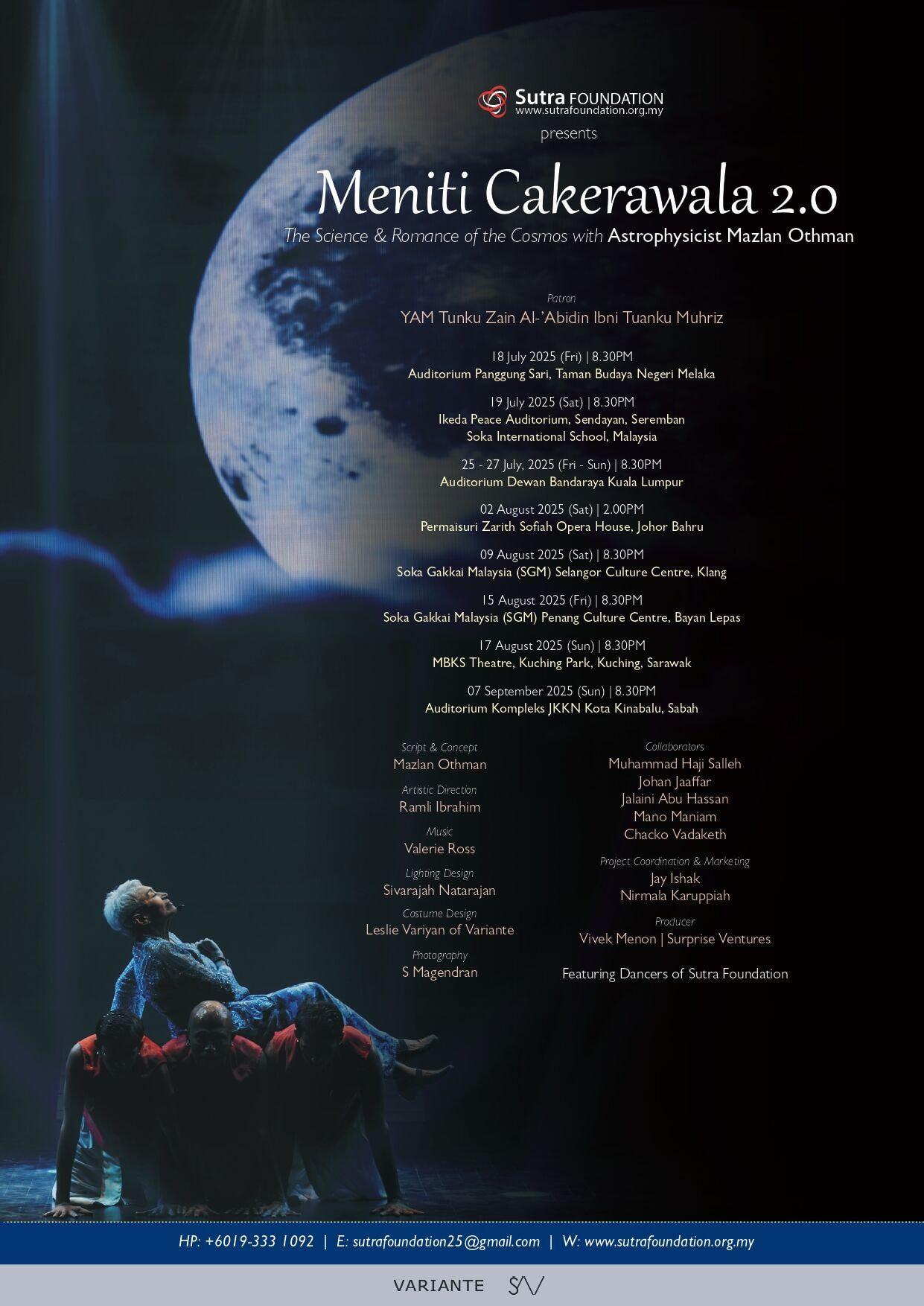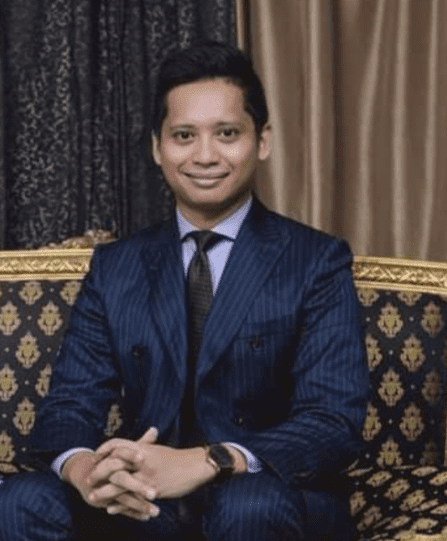02.07.2025
Dancing with the Cosmos: An interview with Datuk Ramli Ibrahim on the cultural constellations of Malaysia
In this GC exclusive, Malaysia’s cultural icon Datuk Ramli Ibrahim reflects on Meniti Cakerawala 2.0 - a poetic national tour that fuses high culture, cosmic wonder, and the timeless spirit of Malaysian artistry. Touring eight cities from July to September 2025, the production transforms classical dance into a celestial dialogue on identity, unity, and the Malaysian soul.
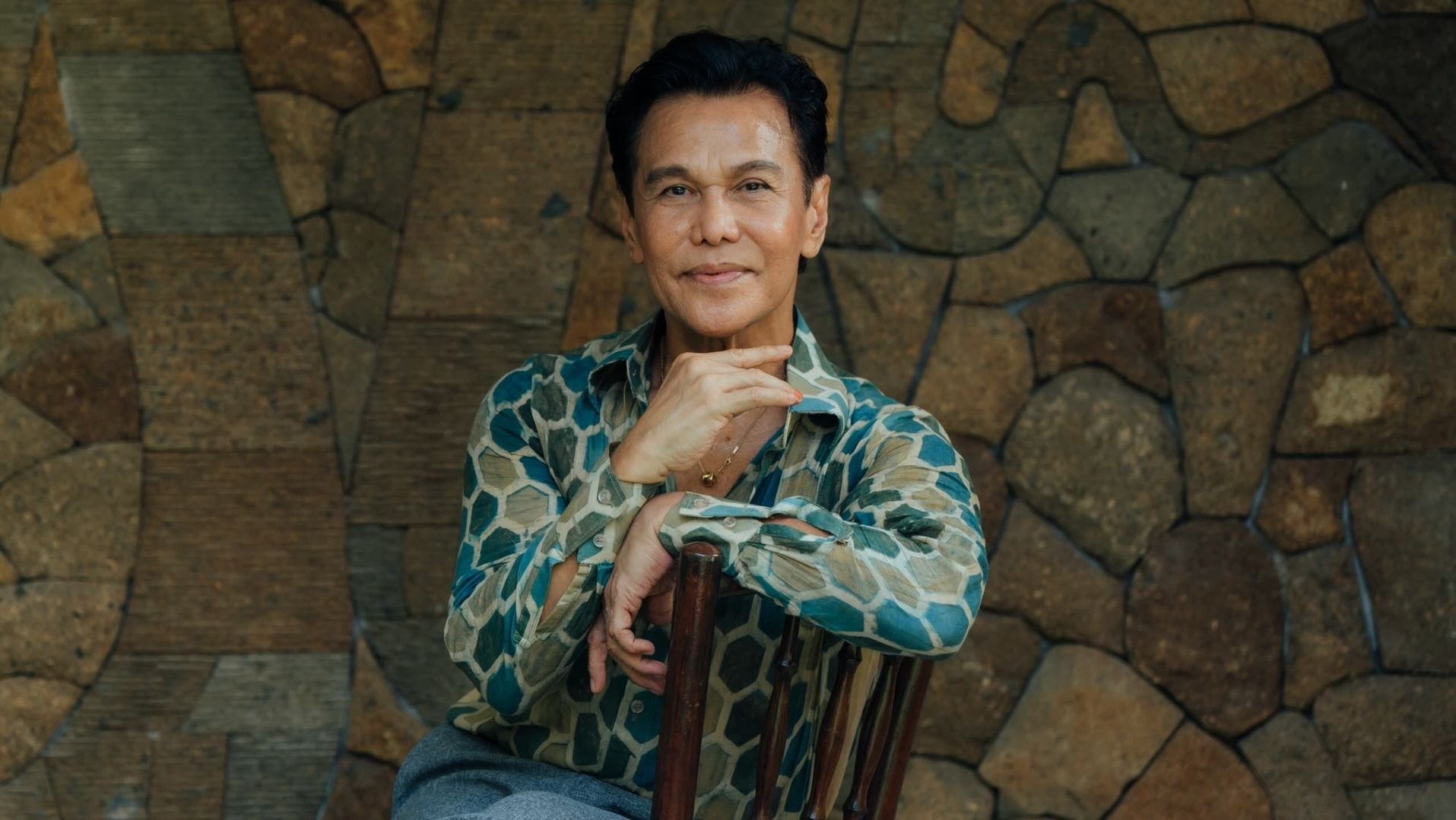
Photo: Datuk Ramli Ibrahim
Words: Raja Izz
There are rare individuals whose lives echo the deeper rhythms of the universe.
Datuk Ramli Ibrahim is one of them.
A revered champion of high culture, he has long used the language of classical dance to transcend race, belief, and time, revealing the soul of Malaysia through movement.
In Meniti Cakerawala, now in its second iteration, Datuk Ramli partners once again with Malaysia’s foremost astrophysicist, Tan Sri Mazlan Othman. Their collaboration is a fusion of body and cosmos, art and science - where the graceful arcs of a dancer mirror the trajectories of stars. The performance is inspired by Tan Sri Mazlan’s book Cosmic Connections, a meditation on our place in the universe, first unveiled in the serene setting of Ambong-Ambong, Langkawi.
Touring eight cities from July to September 2025, the production invites audiences into a poetic encounter with the cosmos. It is a reminder that we are made of the very elements birthed in dying stars - that within our bones lies the memory of galaxies.
We are privileged to engage not just with Datuk Ramli’s artistry, but with his heart, soul, and mind. In his presence, one doesn’t merely watch a performance; one is drawn into a deeper conversation - where culture, science, and spirit meet in elegant unity.
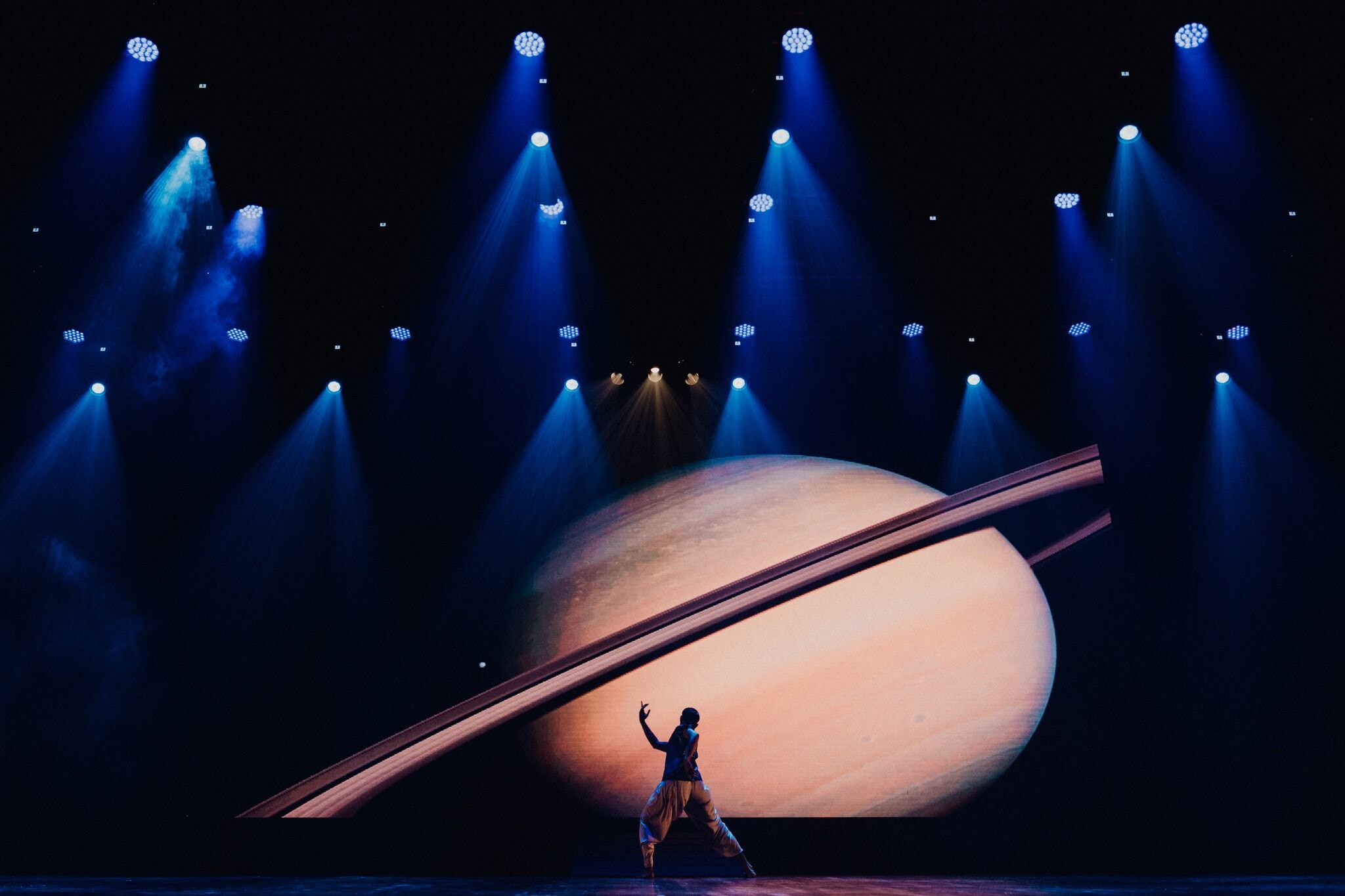
Meniti Cakerawala is a multi-media journey that incorporates dance, film, poetry, visual art, and of course, music, to tell its story.
Photo: Sutra Foundation
Meniti Cakerawala 2.0 merges cosmic science with classical dance – pairing that feels as ancient as it is modern. How did this concept evolve, and what truths do you hope it reveals to Malaysians about our place in the universe and each other’s lives?
First of all, the performers are not performing Indian classical dance per se. The dance vocabulary is rooted in the contemporary modern dance genre. The movement inspiration comes from the sum total of my experience in dance, and I have drawn from both Western and Eastern traditions to bring out the message of this production. After all, Meniti Cakerawala is a multi-media journey that incorporates dance, film, poetry, visual art, and of course, music, to tell its story.
The concept revolves around the science and romance of the cosmos. I say that because we are, quite literally, made of star-stuff. A star must die for us to live. How much more poetic and poignant can our existence be?
As for truths, the most ancient dance-drama text, the Natya Sastra, which in 2025 has been inscribed by UNESCO into its Memory of the World Register, holds that there is no axiom or concept that cannot be expressed through dance. This timeless truth should be a revelation for our audience – provided they first become a rasika (one who feels rasa, or aesthetic emotion) to truly be touched by it. Otherwise, it is like pouring water onto the water-resistant daun keladi (caladium leaf). It simply slides off, leaving no mark.
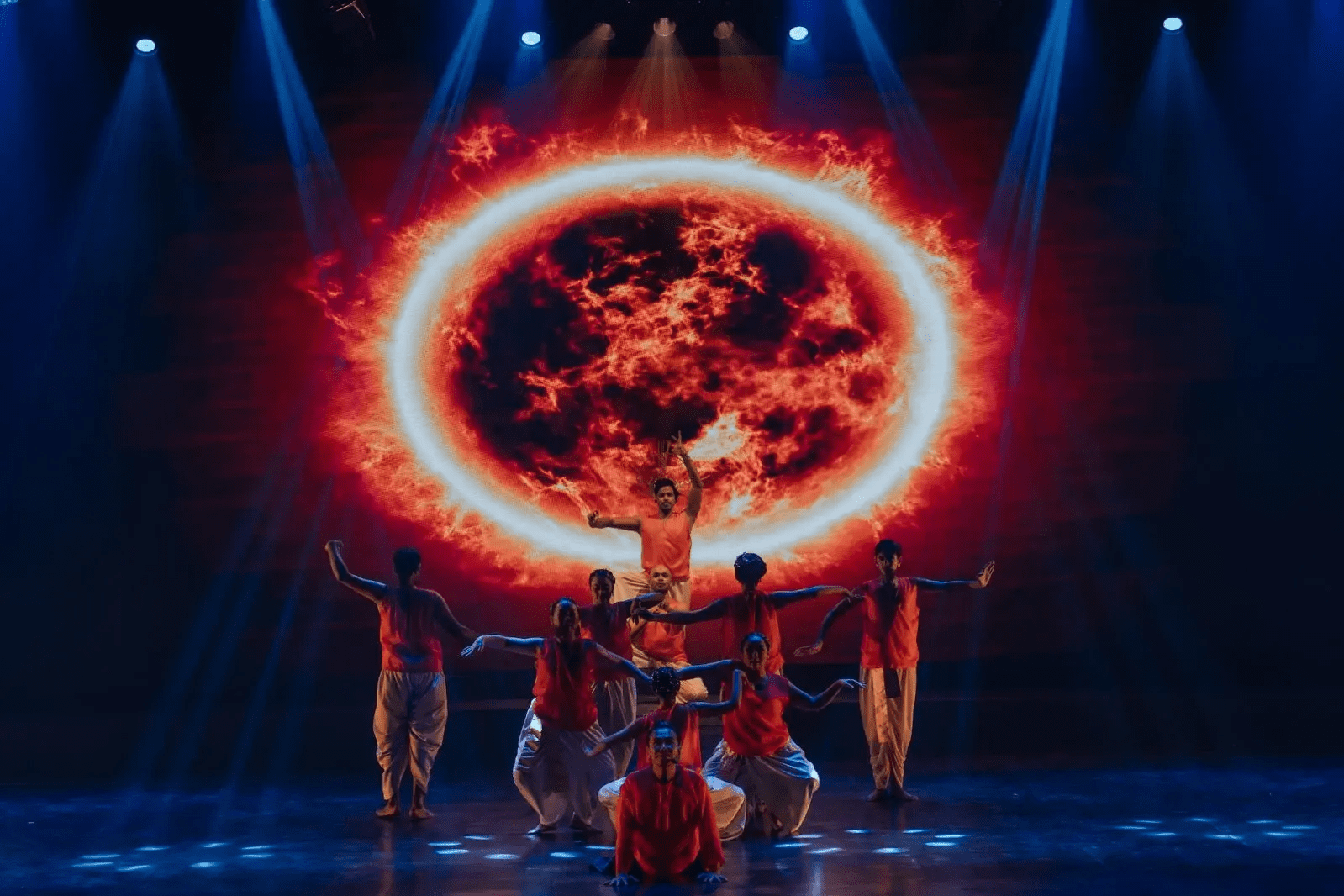
The production was inspired by the 2023 launch of Mazlan’s book ‘Cosmic Connections’.
Photo: Sutra Foundation
In a time where many societies are fragmented along cultural, racial and ideological lines, do you believe that classical dance – rooted in ritual and universal archetypes – can still serve as medium of national unity in Malaysia?
As clichéd as it may sound, I do believe I was destined to dance, and I daresay my enthusiasm and love for choreographing and performing haven’t diminished an iota. Good dance, whether traditional or modern, is timeless. Most great works of art, whether performing or visual, endure the passage of time. However, it remains the responsibility of any government to cultivate public appreciation for the arts and culture as vital ingredients in human growth and development.
If societies are fragmented on cultural, racial and ideological lines, it’s certainly time to review how our citizens are being educated. More and more, enlightened citizens are realising the collective wisdom and sustenance that come with traditions, including dance. If the Malay Makyong teaches us how to behave in a civilised society, the Ramayana teaches us that Good prevails.
For one immersed in Indian classical dance, I sincerely believe it encapsulates the precepts of yoga as a holistic discipline for wellness and self-realisation. To me, all classical dances, ballet included, possess this intrinsic quality of ‘yoga’, teaching us that one must surrender and immerse oneself completely in order to become truly adept in any classical form.
Sutra Foundation (Sutra) has often been described as an ‘ambassador of Malaysian culture’ when in India, and as a representative of Indian culture within Malaysia. In this way, Sutra serves as a model of soft diplomacy. We have long treated arts and culture as a medium for national unity, not just within Malaysia but as an example to the world.
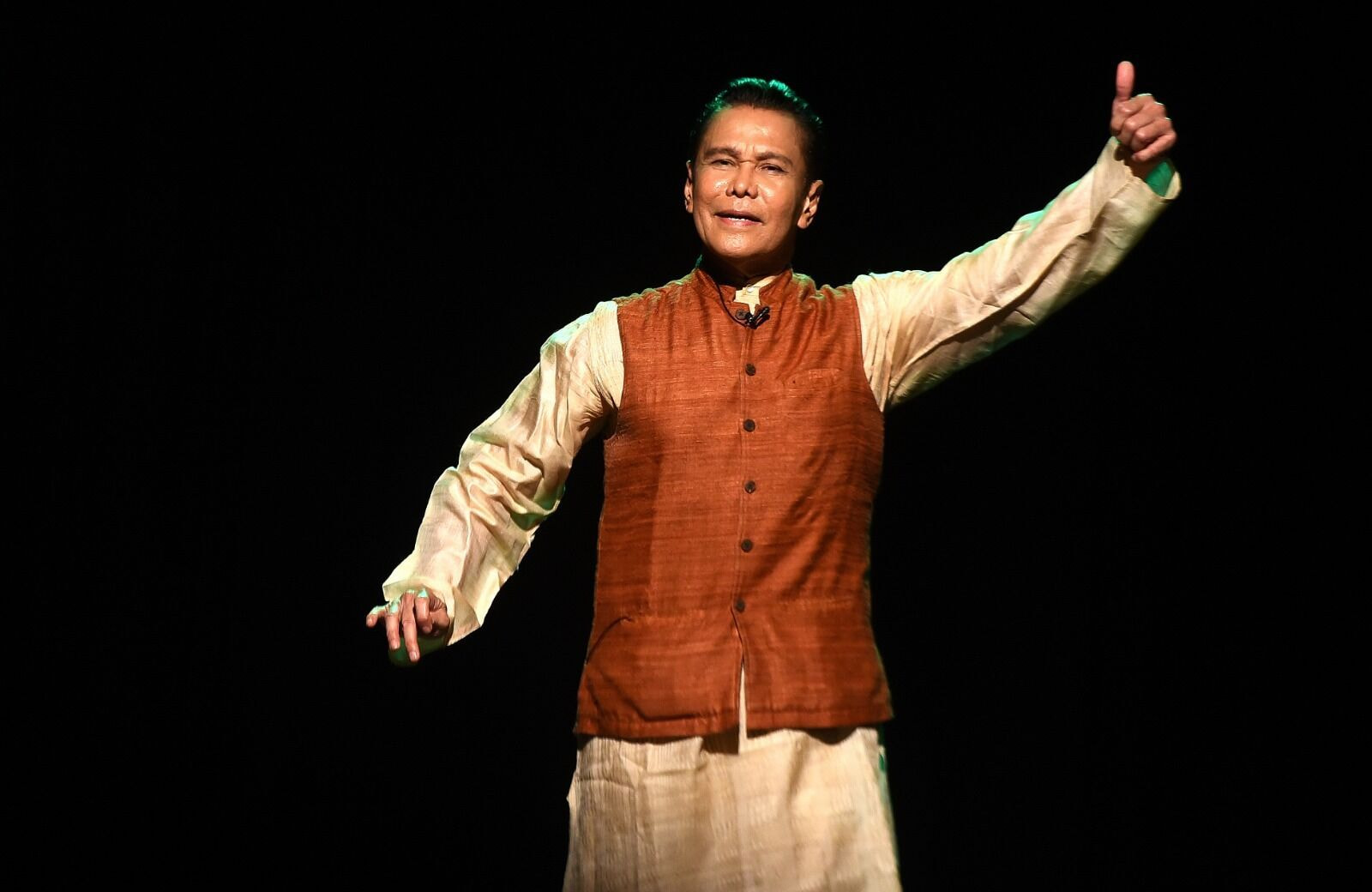
Datuk Ramli has been instrumental in transforming the dance scenario in Malaysia to greater heights. Today, he is known for single‐handedly establishing Odissi as a recognisable and widely appreciated dance form in the country, while creating a distinctively Malaysian interpretation of this ancient tradition.
Photo: Ramli Ibrahim
This tour spans eight cities. How intentional was this geographic diversity in your planning? Are you making a statement that culture must not remain in the ivory towers of Kuala Lumpur, but return to the rakyat across the archipelago?
When one has created something good that sends the right message, one naturally feels compelled to share it! Honestly, I didn’t realise Meniti Cakerawala was going to be such a winner. I would have been satisfied with just that one-week season in Kuala Lumpur. But from the feedback, many in the audience were so taken by Meniti that they convinced us we needed to bring it – especially to the youth – in as many Malaysian cities as possible. And so, the tour was born.
As a seasoned performer who has done countless road shows globally, I’ve always believed Malaysia is not just Kuala Lumpur, and that the arts should not be confined to being KL-centric. For that matter I strongly feel that we must bring the arts to every corner of the country – arts and culture should not be reserved only for the big cities or the capital. Everyone, everywhere, deserves to be part of this cultural conversation.
Sutra is probably the one Malaysian dance company that has toured the most. Not only have we performed the length and breadth of the nation, from Kangar to Kota Kinabalu in Malaysia, but also to many cities in the world!
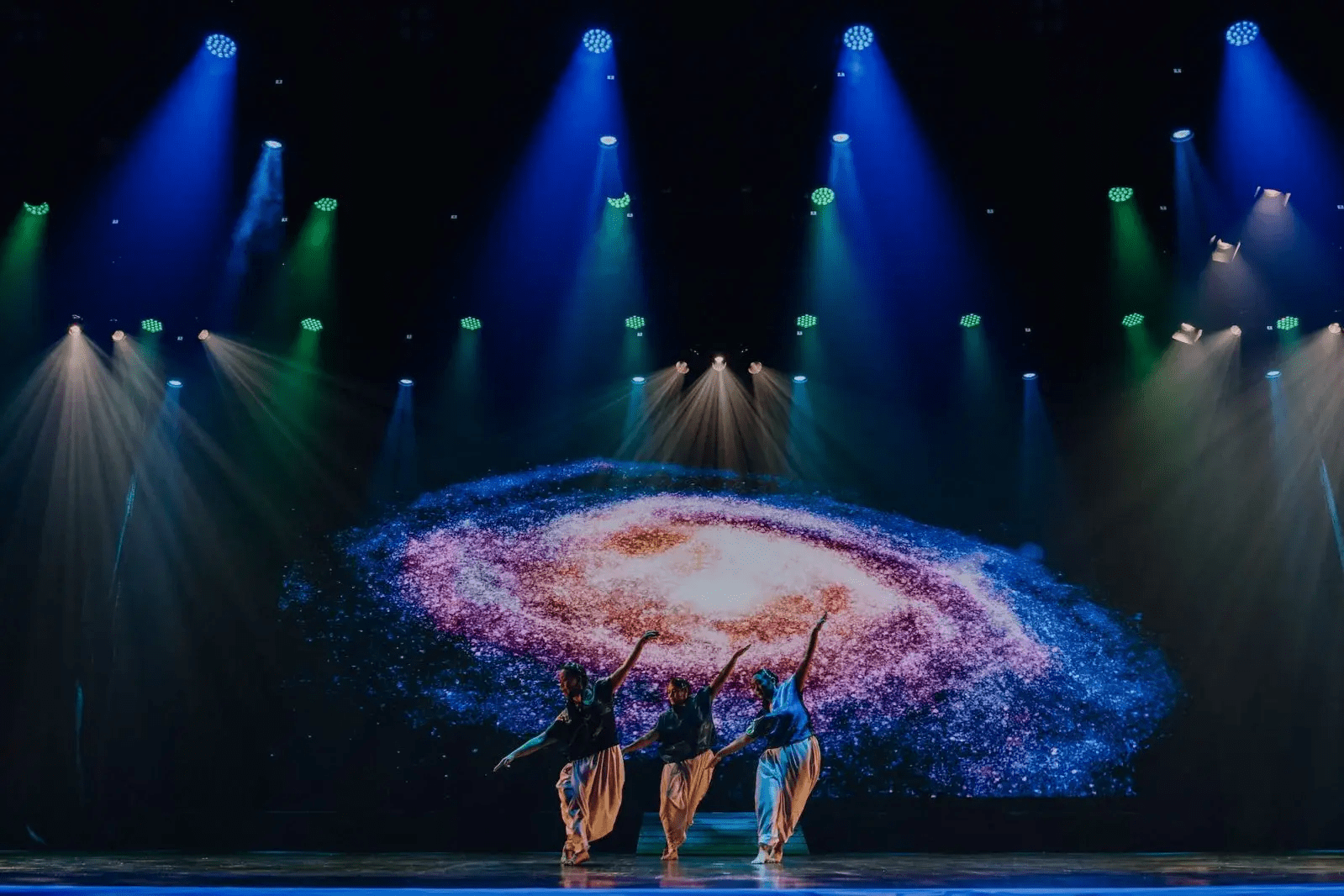
The production, which will tour eight cities in Malaysia, is presented in four thematic ‘Phases’.
Photo: Sutra Foundation
Culture, when elevated becomes a form of diplomacy – internal and external. Do you view Meniti Cakerawala 2.0 as Malaysia’s cultural envoy to the world, a performance that can stand with the Bolshoi, the Royal Ballet, or Japan’s Noh Theatre?
Truly, we don’t need to look as far as Russia, the UK, or Japan to prove our worth. We would be more than satisfied to serve as an emissary of cultural diplomacy that represents ASEAN, especially with Malaysia being the ASEAN chair this year. The universal message that Meniti Cakerawala carries certainly fits ASEAN cultural diplomacy to a ‘T’.
Yes, we can certainly hold our own alongside the Bolshoi, the Royal Ballet, or Japan’s Noh Theatre. After all, Sutra has already won over the most populous nation in the world – India! That alone speaks volumes.
Frankly speaking, we would be far more confident to stand shoulder to shoulder with these iconic cultural institutions if only Malaysia invested in arts and culture as robustly as Russia has in the Bolshoi, the UK in the Royal Ballet, or Japan in its Noh Theatre. Great art needs fertile ground to grow and we must put our money where our mouth is if we want our cultural envoys to truly shine on the world stage.
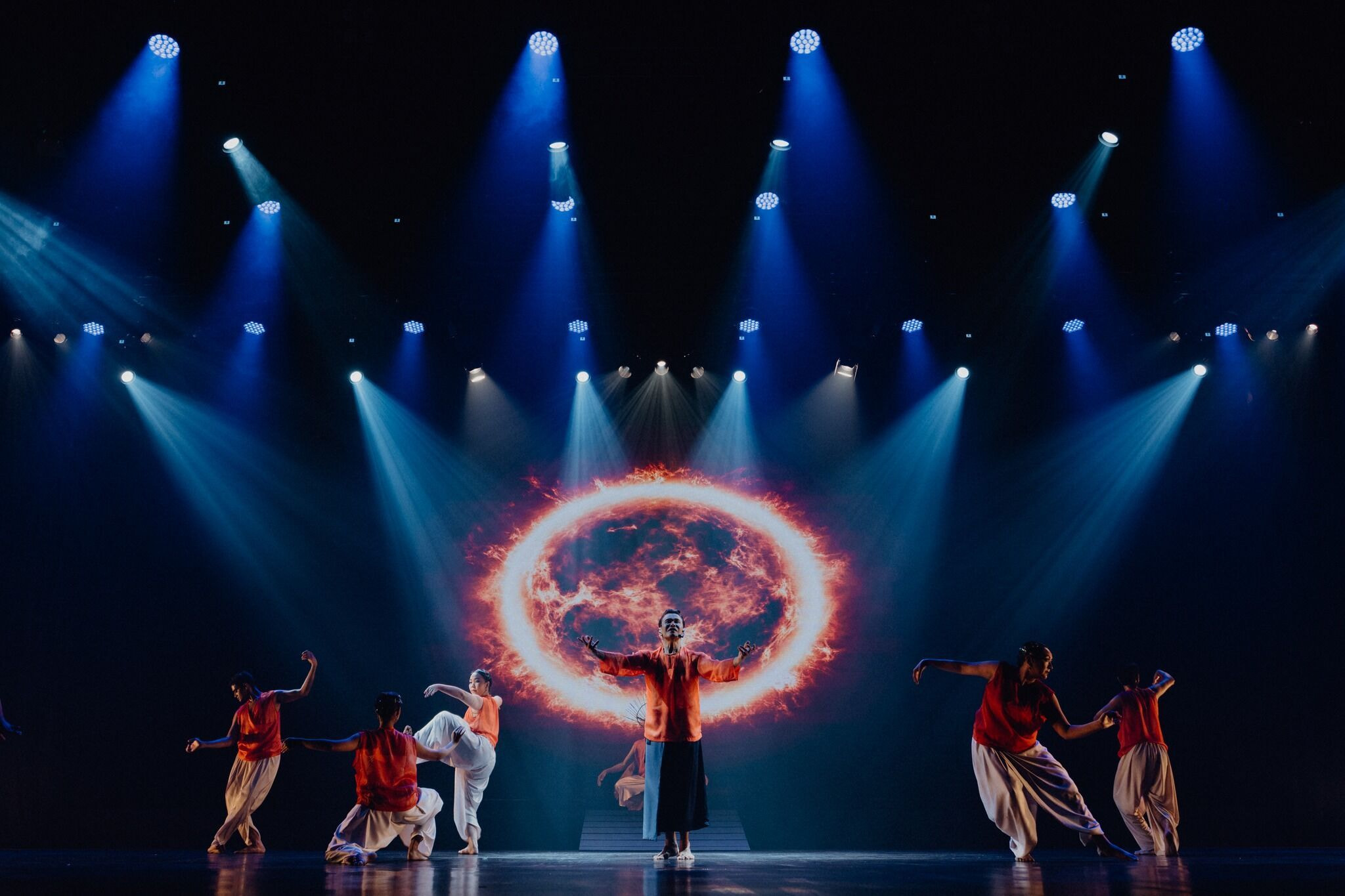
In Meniti Cakerawala, there is indeed an ambiguity and a dramatic tension that breathes life into the production.
Photo: Sutra Foundation
You’ve often spoken about preserving traditional dance in a modern world. In Meniti Cakerawala 2.0, is there an artistic tension between scientific modernity and spiritual tradition - and is that tension what creates the production’s magic?
There is, interestingly, more of a ‘brick wall’ within scientific modernity itself than a tension within the mystical spiritual tradition. Science, by its nature, relies on data and evidence, while spiritual tradition draws on inspired intuition and the wisdom of the ages. At the same time neither can claim they know all the answers. The mystical tradition is not obsessed with having all the answers, whereas science itself openly admits it still understands only about 5% of what’s happening in the cosmos.
Think about the vast realms of dark matter, dark energy, and quantum entanglement, all mysteries that continue to stump even our brightest minds. Quantum physics has even challenged the idea of absolute truths when it comes to time, matter, and energy. Matter and energy are interchangeable, and even time is no longer a constant when we travel beyond the speed of light. It’s a humbling reminder that there’s always more to know.
The Nasadiya Sukta of the Rig Veda, one of the world’s oldest spiritual texts, beautifully captures this timeless mystery of creation: “Who knows when it all came and how creation happened? Whether He fashioned it or He did not? He, who surveys it all from the highest heaven, He knows—or maybe even He does not know!”
So yes, in Meniti Cakerawala, there is indeed an ambiguity and a dramatic tension that breathes life into the production. Like all good art, it doesn’t hand out neat answers. Instead, we invite you to dance with the unknown. And perhaps that is where the real magic lies – in our striving to understand it all during our brief moment in this vast, cosmic story.
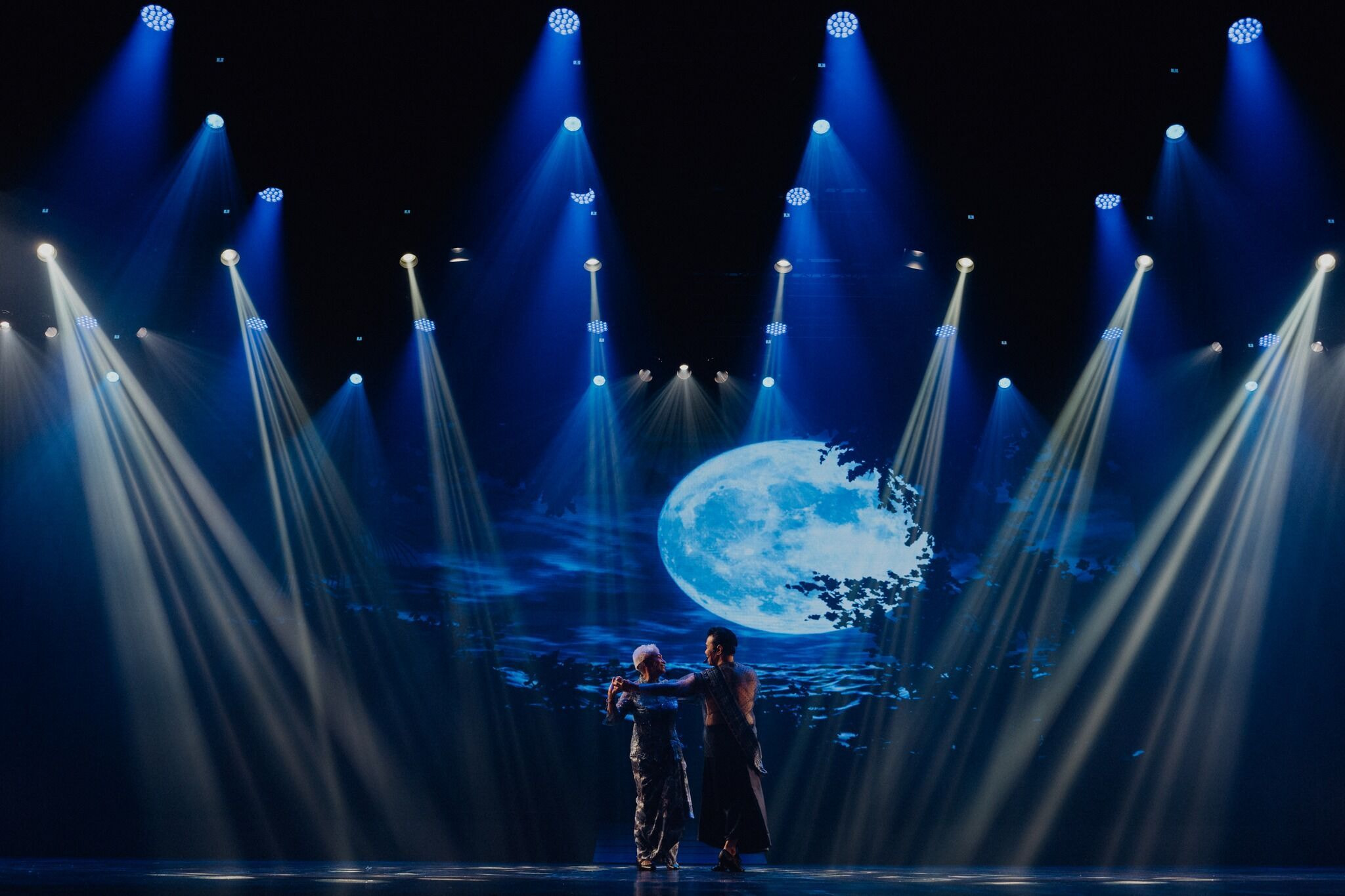
Tan Sri Mazlan Othman and Datuk Ramli Ibrahim stand united in the belief that the cosmos is the ultimate frontier that invites mankind to dream beyond what science alone can measure or what faith alone can contain.
Photo: Sutra Foundation
Tan Sri Mazlan Othman represents the cerebral, astronomical lens of the cosmos. You, the visceral and mystical. How did your collaboration bring a holistic Malaysian narrative to the stage – beyond science, beyond faith, into the poetic?
Both of us represent the complementarity of opposites. Mazlan is the scientist but I often chide her for being the Alice traipsing around the Universe and not having her dainty feet on the ground. I on the other hand am the practical one and the one who is always making sure that everyone is comfortable and has their much-needed cuppa.
Yet for both of us, our true common ground is a shared fascination with the unfathomable, immeasurable infinity of space, time, and energy. More than anything, we’re both completely swept away by the poetic, the terrifying beauty, and the sheer romance of the cosmos.
We stand united in the belief that the cosmos is the ultimate frontier that invites mankind to dream beyond what science alone can measure or what faith alone can contain. It’s this delicate dance between the cerebral and the visceral, the rational and the mystical that brings Meniti Cakerawala to life as a narrative that is uniquely, poetically Malaysian.
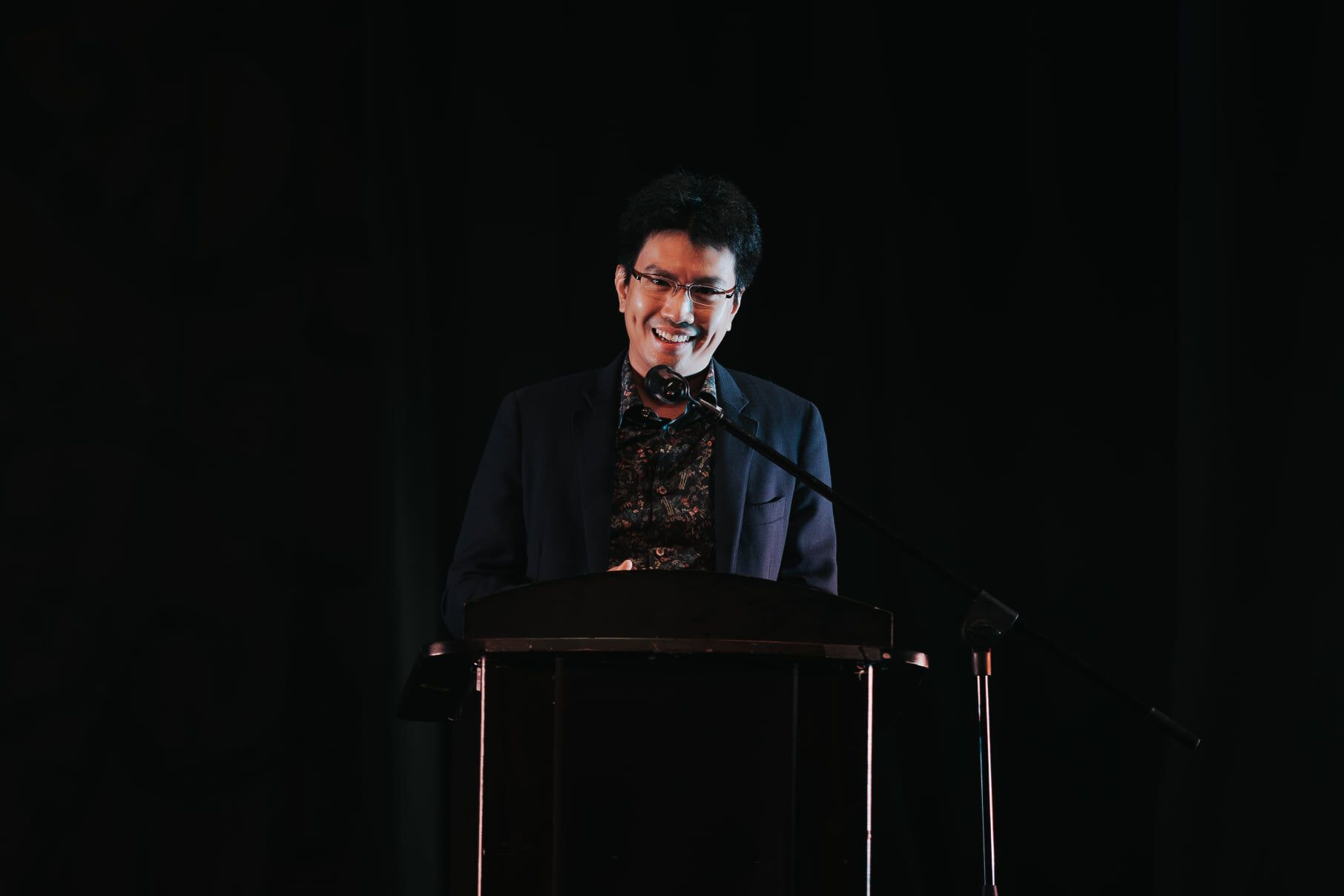
Meniti Cakerawala Patron YAM Tunku Zain Al-'Abidin ibni Tuanku Muhriz giving his speech on the opening Gala Night of Triple Frontiers (2021).
Photo: Ramli Ibrahim
From Sutra Foundation’s early days to now, what role has patronage - both state and private - played in sustaining high culture in Malaysia? And what more must our institutions do to preserve the intangible heritage you’ve fought for?
Right from the start, and to this day, Sutra Foundation has relied more on individual patronage than on steady state or corporate support. We’ve been incredibly fortunate to have friends and well-wishers who have stood by us through thick and thin.
State support has helped us pull off some large projects over the years, but unfortunately that funding often dries up once a project wraps up to leave us back at square one. Private corporate support, meanwhile, has been few and far between. Frankly, I believe that Corporate CSR programmes for arts and culture in Malaysia are no longer taken as seriously as they should be.
However, for a resource centre like what Sutra Foundation has become, sustained support is crucial, not just for us, but for the artists and organisations that depend on us. We’ve only managed because of individuals with the right access and goodwill to help us navigate state machinery. For instance, I’m deeply grateful that my personal property, KamaRia, could be transferred to Sutra Foundation without the heavy burden of stamp duty. This would not have been possible without the state’s approval.
All institutions, and particularly those dedicated to arts and culture, must be led by people with vision, integrity, and above all, passion. Without the right leadership at the helm, the renaissance we all hope for will remain just that – a dream waiting in the wings.
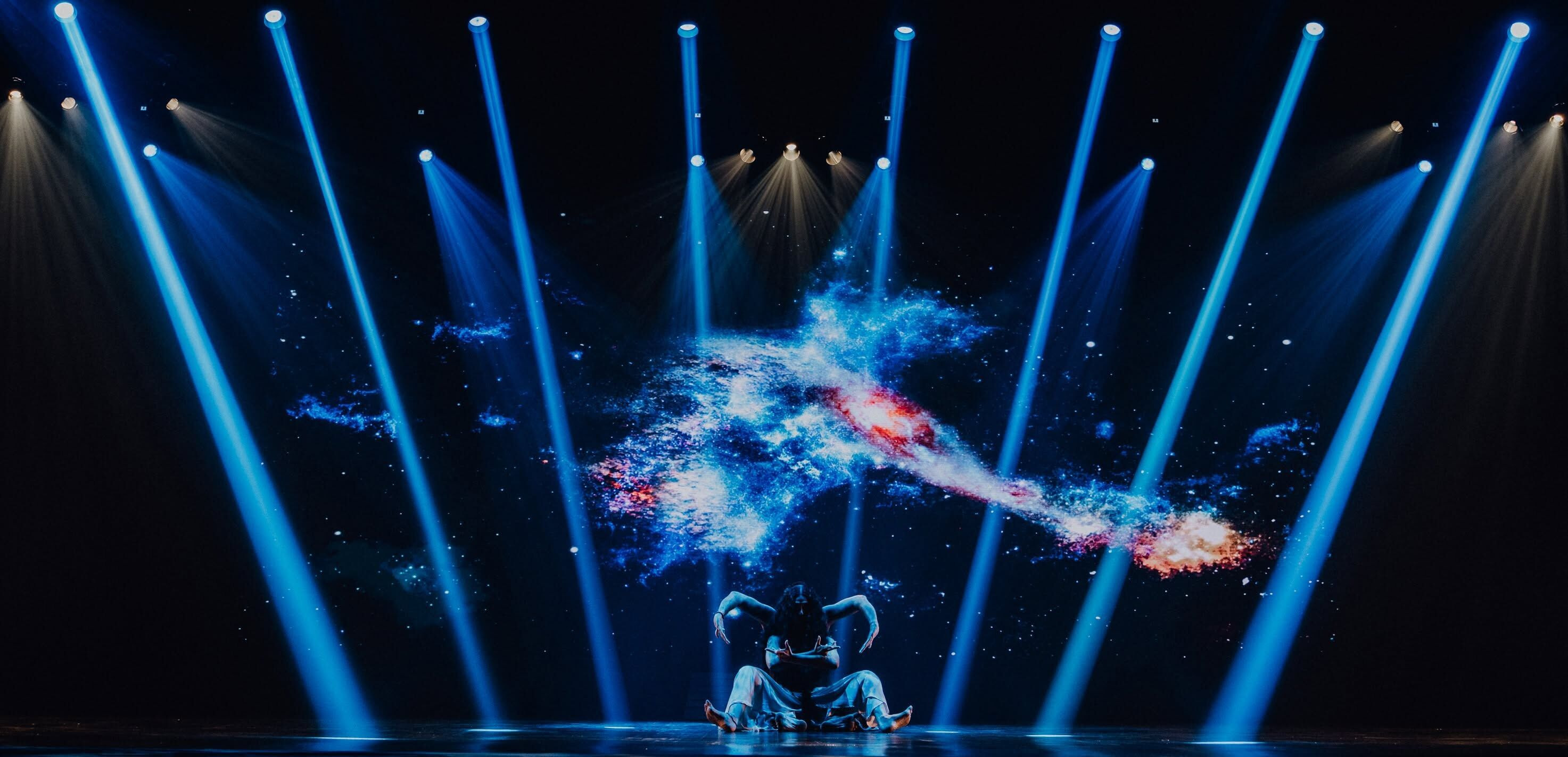
Datuk Ramli hope that the young people who watch Meniti Cakerawala will walk away humbled, awed by the miracle of our existence, and inspired to ensure that human civilisation does not destroy itself, but continues to flourish and reach greater heights.
Photo: Sutra Foundation
Finally, what legacy do you hope Meniti Cakerawala 2.0 leaves for the next generation of Malaysians? Beyond the applause and ovation, what should they carry in their souls after watching this performance?
The underlying message of Meniti Cakerawala is that, in the grand timescale of the cosmos, we are not even a blink of an eye. As I’ve mentioned before, we are made of star-stuff, in that a star somewhere out there had to die for us to exist. The very elements that make up our bodies were once forged in the belly of a star, flung across the universe to become us.
Though humanity may be a miracle in the context of our Milky Way Galaxy, there are trillions of galaxies out there in space. We may not be that special. Why are we then fighting over race, religion and petty nationalism which are all insignificant in the context of the Universe?
With this in mind, I find our search for the ‘meaning of life’ becomes rather inconsequential. What I truly hope is that the young people who watch Meniti Cakerawala will walk away humbled, awed by the miracle of our existence, and inspired to ensure that human civilisation does not destroy itself, but continues to flourish and reach greater heights.
If that seed of wonder and shared humanity can take root in their hearts, then I would feel Meniti Cakerawala has played its part.
For Meniti Cakerawala 2.0 tickets, visit here
